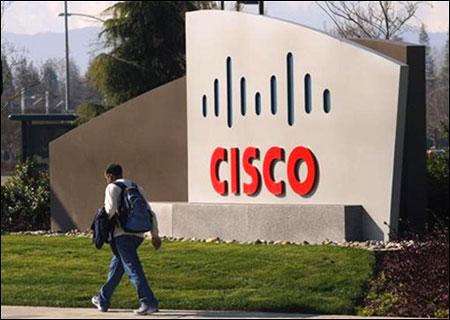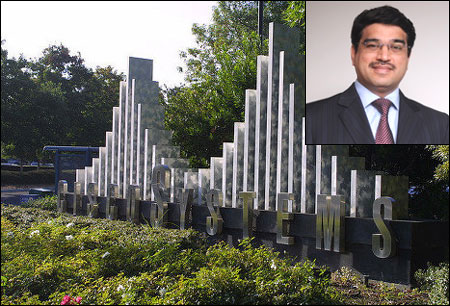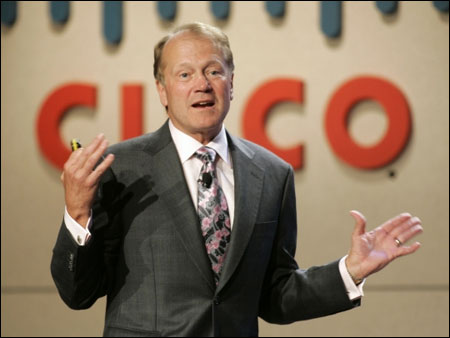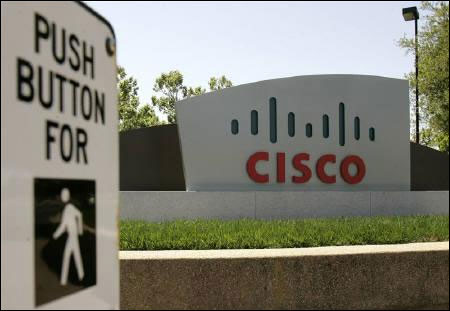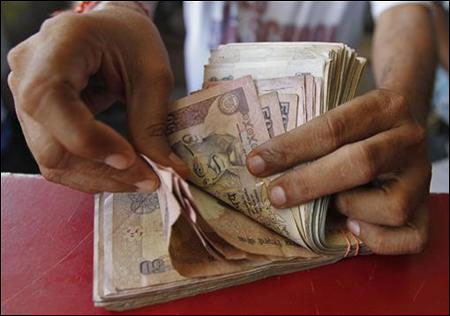 | « Back to article | Print this article |
Cisco's India bet gains momentum
Naresh Wadhwa's favourite place at his company's Bangalore campus is building number 16. So, the moment Wadhwa, president and country manager of Cisco India and South Asia, walks into the building and swipes his card, he knows the room which will be his work station.
Everything in the building is controlled through touch panels and internet protocol (IP)-based phones. Wadhwa does not have to bother telling people about his phone extension number or worry about where his official mails and data are stored.
He can personalise the meeting room as his mobile devices - mobile phone, tablet or laptop - will be synchronised with the server. Since all devices are IP connected, details of Wadhwa's usage, like his phone extension, email details, presentations and others become part of the systems in that room.
Click on NEXT for more...Cisco's India bet gains momentum
Since everything such as air-conditioning, lights, window-panels are controlled via IP, Wadhwa does not have to bother switching on or off. Since the room has been allotted based on Wadhwa's time being spent there, the AC starts just a few minutes before he enters the room and switches off as his duration for the room ends.
The building that will house 1,500 employees is a showcase of the company's 'smart connected communities'. Constructed as a smart building, it incorporates all the latest technology features."We have believed in eating our own dog food. So when we moved from products to concepts and providing an end to end framework, we started with ourselves," said Wadhwa. Their infrastructure in Bangalore demonstrates what is possible by using technology to save power cost and build efficiency into cost.
For Cisco, its India centre has in the recent years been about driving innovations and products that can then be taken to other markets. Its Globalisation Centre East set up in Bangalore in 2007 has been driving solutions in healthcare, smart connected communities and education in India.
Click on NEXT for more...Cisco's India bet gains momentum
The India focus has been a key element of chief executive officer and chairman of the board, John Chambers' strategy. According to company officials, Chambers wanted India to be the second largest hub for the company to develop products as early as 2006. It seems Cisco has been successful in doing so.
Since FY07, the company's headcount in India has gone up by over 8,300 to the present 10,000. The number of senior management that is driving the business has also gone up from eight in 2007 to almost 100 at present. The number of vice-president and senior vice-presidents went up from just one to 14. It then comes as no surprise that Cisco India has filed for over 700 patents, of which 400 have been issued.
The idea behind setting up the GCE was to be able to come out with products right from concept to completion in India. Cisco's ASR 901 cell site router and BE3000, a wireless network router, and localising set-top boxes are some of the recent examples of such efforts. Rather, all these products have been built after taking feedback from customers.
"These are products that have been incubated in India. But the best part of these products is that they are doing very well in the international markets as well. That again shows we have managed to build products that are low-cost, but have all the global regulatory and compliance requirements," he said.
Click on NEXT for more...
Cisco's India bet gains momentum
With India being a favoured location for research and development and engineering centre for several firms, Cisco's centre has further received a boost from some of the acquisitions it has done. Since many have had centres in India.
The recent NDS acquisition for $5 billion is also an apt instance. NDS has a strong base of 2,000 engineers in India, they will not join the Cisco team and work on the next big play for the company, video.
"Other than the R&D capability of NDS in India, we will also get entry into the media segment here. Majority of DTH players use NDS technology platform. Cisco anyways has presence in the cable industry due to our set-top boxes business," added Wadhwa.
Click on NEXT for more...
Cisco's India bet gains momentum
For Cisco, revenue contribution from India is around two-to-three per cent. One of the key changes post Cisco's recent restructuring was the geography based segmentation.
Cisco now has three main geographies as focus--Americas (the US, Canada, and Latin America), EMEA (Europe, the Middle East and Africa) and Asia Pacific, Japan and China).
"Since each geography has its own dedicated teams, we can now take several decisions that earlier were not possible," said Wadhwa. Before the restructuring, the all decisions for regions were taken by the headquarters. But now, each region will be responsible for their own profit and loss.
Cisco has presence across three sectors-- Commercial (small and medium enterprises), public sector and services providers. "The public sector is clearly seeing a slowdown, but we have been able to mitigate the impact as the other segments are doing well. Especially the small and medium businesses. Service providers are also holding on. BFS, IT and media (digitisation effort) is keeping is afloat," said Wadhwa.
